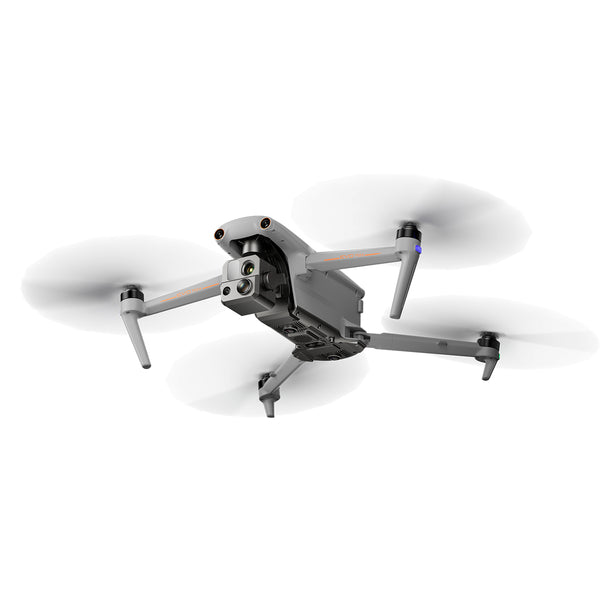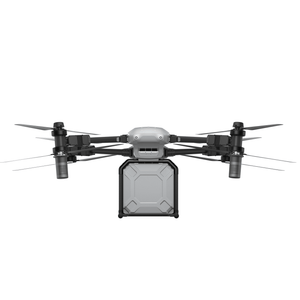The Arctic is extremely cold and the living conditions are harsh. But we are also discovering new opportunities in the Arctic, including air routes, oil and mineral exploration, marine life research, and environmental monitoring. Drone technology is bringing new possibilities in the extreme environment of the Arctic and helping us discover more.
We are entering a new era of opportunity in the Arctic. In the Arctic, drone technology is widely used in many fields, mainly for scientific research, environmental monitoring, infrastructure inspections, and search and rescue operations.
Can you use drones in the Arctic?

Drones are not allowed to be flown for recreational purposes in the Arctic and Antarctic regions. However, drones can be flown in certain areas within the law.
One of the provisions of the Federal Aviation Administration Modernization and Reform Act of 2012 states that permanent areas in the Arctic will be designated in cooperation with relevant federal agencies and national and international communities, where small drones can be flown 24 hours a day for research and commercial purposes and search and rescue (SAR) operations.
The Arctic provides an opportunity to test drones in environmental applications without the usual restrictions of the Federal Aviation Administration. It allows testing of beyond visual line of sight (BVLOS) flights and establishes permanent “Arctic operating areas and corridor routes” for drones.

Autel Robotics EVO MAX 4T Rugged Bundle
$8999.00 USD
Do drones work well in cold weather?
Of course! Most commercial drones can operate in cold weather. However, flying a drone in cold weather is riskier than in warm weather, especially in polar regions. The Arctic is barren. There are no buildings, no trees, and drones have to deal with strong winds.
Most drones are powered by lithium batteries, which do not perform well in cold conditions. The colder the weather, the shorter the battery life. Therefore, pay attention to the critical ambient temperature conditions for drone operation.

Related More: 5 Tips for Flying Autel Drones in Cold Weather
Precautions for using drones in the Arctic:
Flying a drone in the Arctic Circle is not an easy task. It requires a lot of flight practice, as well as learning to fly a drone in attitude mode. Flying a drone in the Arctic may encounter a series of obstacles, and you need to be prepared for everything in advance.
- Watch out for magnetic interference from the poles
- Watch out for wind conditions, which are very strong in polar regions
- Preheat the drone's battery
- Go with an expert to avoid entering uninhabited areas
- Watch out for precipitation and snow
- Extra accessories, extra drones
- Keep warm
Expect all possible outcomes, and prepare all your equipment before setting off!
What are drones used for in the Arctic?
Due to the extremely special environment in the Arctic, the harsh climate and terrain make drones a very useful tool that can perform tasks in areas that are difficult to reach by traditional means. The emergence of Arctic drones has improved the efficiency of inspections and monitoring, and has replaced people in dangerous tasks.

Arctic drones: environmental and climate monitoring
Glacier and sea ice monitoring: Drones can be used to monitor glacier changes, sea ice thickness and movement in the Arctic. Through high-precision imaging and sensors, scientists can collect data to analyze the impact of climate change on the polar ice caps.
Ecosystem observation: Drones can help observe the ecology of plants and animals in the Arctic, including monitoring wildlife behavior, population size and habitat changes. For example, studying the living conditions of endangered species such as polar bears, seals, and whales.
Atmosphere and air quality monitoring: Drones can fly at low altitudes and collect atmospheric and air pollution data, which can help study climate change and the spread of pollution in the Arctic.
Arctic drones: scientific research and data collection

Topography and mapping: In inaccessible areas of the Arctic, drones can be used for topographic mapping and high-precision maps to help scientists understand geographical changes.
Ice and glacier crack detection: Traditional methods have difficulty entering ice cracks, but drones can easily fly over and photograph, helping researchers analyze the geological structure under the glacier.
Arctic drones: infrastructure inspection
Oil and gas pipeline inspection: The Arctic region has abundant oil and gas resources. Drones can be used for routine inspections of pipelines, drilling platforms and other infrastructure to ensure their safe operation.
Power and communication equipment monitoring: Due to the harsh natural environment in the Arctic, it is very difficult to maintain equipment such as power lines and communication base stations. Drones can perform rapid inspections in high-risk areas and reduce manpower requirements.
Arctic drones: search and rescue and emergency response

Search and rescue operations: Drones can be quickly deployed in polar environments to conduct large-scale search operations, especially in complex conditions such as low temperatures, blizzards or at night. Their thermal imaging equipment can help find missing people or ships.
Disaster response: In the event of extreme weather, environmental disasters or emergencies, drones can be used to assess the disaster in real time and help emergency response teams develop rescue plans.
Arctic drones: small cargo transportation and supply
Drones can also be used to transport small cargo in the Arctic, especially in areas that are difficult for humans to access, to transport necessities and medical supplies for scientific research teams or local residents.

Autel Robotics Titan heavy-lift Drone
Contact us
Challenges of drones in the Arctic:

The extreme climate in the Arctic places strict demands on the operational performance of drones. The extreme climate conditions such as low temperatures, strong winds and polar day and night in the Arctic pose challenges to the operation of drones. Drones need to be able to withstand cold and maintain stable flight in adverse weather conditions.
Due to the low temperature environment in the Arctic, the battery life of drones may drop significantly, so specially designed battery systems are needed to extend flight time.
In polar regions, GPS signals are relatively weak, which places higher requirements on the navigation and positioning accuracy of drones.
Conclusion
Drones provide opportunities for people in remote Arctic communities, and unleashing the potential of drones in the Arctic is an important technological innovation at the forefront. Rising temperatures have caused irreversible melting of polar glaciers. With the help of drone technology, the exploration and transformation of polar regions can be accelerated.








